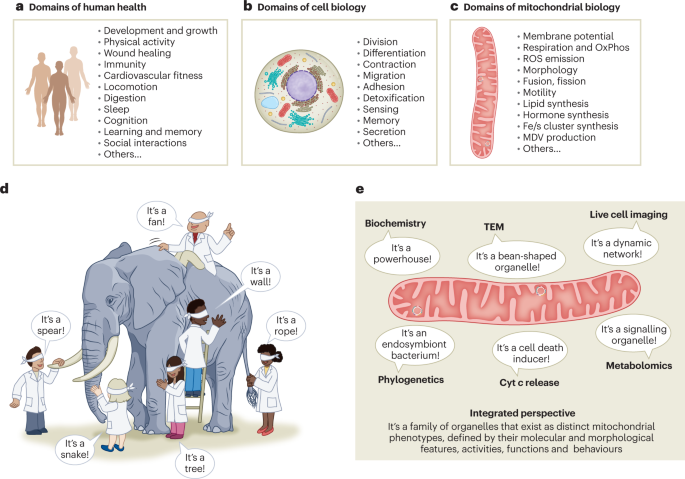Moving domains affects free domains by potentially causing a loss in search engine rankings and traffic. It may also disrupt email services and backlinks.
Switching domains can be a daunting task, especially when using a free domain. Free domains often lack the robust features and support systems that paid domains offer. This can lead to complications during the transition. It’s crucial to plan meticulously to minimize disruptions.
Redirects should be set up to maintain search engine rankings. Updating all backlinks ensures that your audience can still find you. Email services linked to the old domain may need reconfiguration. These steps can help mitigate potential negative impacts. Always consider consulting with a professional to ensure a smooth transition.
Domain Migration Basics
Moving a domain involves changing the address of your website. This process can affect free domains. Understanding the basics helps you manage the migration smoothly.
Definition And Importance
Domain migration means transferring your website from one domain to another. It is important because it can impact your site’s traffic and rankings. A successful migration keeps your website running without issues.
Free domains can be tricky during migration. They often have limitations. Knowing these limitations helps you plan better.
Common Reasons For Moving
- Rebranding: Changing your business name.
- SEO Improvements: Moving to a more SEO-friendly domain.
- Domain Expiration: Free domains often come with expiry dates.
- Better Features: Paid domains offer more features and control.
| Reason | Impact on Free Domains |
|---|---|
| Rebranding | May need a new free domain. |
| SEO Improvements | Free domains might lack SEO tools. |
| Domain Expiration | Need to renew or buy a new domain. |
| Better Features | Free domains have limited features. |

Credit: simonmustoe.blog
Impact On Free Domains
Moving domains can significantly impact free domains. Understanding these effects can help you navigate the process smoothly.
Potential Risks
Switching domains may lead to potential risks for free domains:
- Loss of Traffic: Your site might lose traffic during the transition.
- SEO Ranking Drops: Search engine rankings might drop temporarily.
- Broken Links: Existing links may become broken, affecting user experience.
- Email Disruptions: Email services linked to the domain may face interruptions.
Benefits Of Migration
Despite the risks, moving domains can offer several benefits:
- Improved Branding: A new domain can better reflect your brand.
- Better SEO Opportunities: A keyword-rich domain can enhance SEO.
- Enhanced Security: Moving to a new domain might offer better security features.
- Fresh Start: New domains can provide a clean slate for content and reputation.
| Risk | Benefit |
|---|---|
| Loss of Traffic | Improved Branding |
| SEO Ranking Drops | Better SEO Opportunities |
| Broken Links | Enhanced Security |
| Email Disruptions | Fresh Start |
Weighing the risks and benefits is crucial before moving your domain. Make informed decisions to minimize disruptions.
Seo Considerations
Moving domains can significantly impact your website’s SEO. Understanding the implications is crucial for maintaining and improving your search engine rankings. This section delves into essential SEO considerations.
Maintaining Rankings
Maintaining your rankings is paramount when moving domains. Follow these steps to ensure a smooth transition:
- 301 Redirects: Set up 301 redirects from old URLs to new ones.
- Update Internal Links: Update all internal links to point to the new domain.
- Google Search Console: Inform Google about the domain change in Search Console.
- Check Backlinks: Ensure that high-quality backlinks are updated to the new domain.
- Monitor Traffic: Use analytics tools to monitor traffic and identify issues.
Avoiding Penalties
Avoiding penalties is essential during a domain move. Search engines can penalize sites for various reasons. Here are some tips to avoid penalties:
- Duplicate Content: Ensure no duplicate content is present on both domains.
- Broken Links: Check for and fix any broken links promptly.
- Spammy Practices: Avoid any spammy SEO practices that can lead to penalties.
- Quality Content: Maintain high-quality, original content on the new domain.
- Regular Audits: Conduct regular SEO audits to identify and fix issues early.
By following these guidelines, you can minimize the impact on your SEO and ensure a successful domain move.

Credit: support.wix.com
Traffic And Analytics
Understanding how moving domains affect your traffic and analytics is crucial. It ensures you don’t lose valuable data and visitors. This section will explore different aspects of tracking and analyzing traffic patterns.
Tracking Changes
Tracking changes after moving domains is essential. You need to monitor your traffic sources, bounce rates, and user behavior. Use tools like Google Analytics for accurate tracking.
Set up proper redirects from your old domain to the new one. This helps in maintaining the SEO value and ensures a smooth transition for visitors. Monitor these redirects closely.
- Check if all 301 redirects are working.
- Ensure no broken links are present.
- Update your sitemap with new URLs.
Analyzing Traffic Patterns
Analyze traffic patterns to understand how your move affects visitor behavior. Look for changes in the following metrics:
| Metric | Before Move | After Move |
|---|---|---|
| Organic Traffic | 8,000 | 7,500 |
| Bounce Rate | 40% | 45% |
| Average Session Duration | 3 mins | 2.5 mins |
Adjust your SEO strategies based on these metrics. If the bounce rate increases, check the user experience on your new domain.
Technical Challenges
Moving domains involves several technical challenges. These challenges can affect free domains significantly. Understanding these technical aspects is crucial. Let’s explore some key areas.
DNS Propagation
DNS propagation refers to the time it takes for DNS changes to be updated. This process can take up to 48 hours. During this time, users may see old or new content randomly. This inconsistency can confuse visitors.
Here are some important points:
- DNS changes can take 24-48 hours to propagate.
- Visitors may see old or new content during this period.
- Some regions might update faster than others.
Redirects And Url Structure
Properly setting up redirects is vital. It ensures users are directed to the correct pages. Poor redirects can lead to broken links and a bad user experience.
Consider the following tips:
- Use 301 redirects for permanent changes.
- Ensure all old URLs point to new URLs.
- Check for broken links after setting up redirects.
Maintaining a consistent URL structure is also important. It helps with SEO and user navigation.
| Old URL | New URL |
|---|---|
| example.com/old-page | newdomain.com/new-page |
| example.com/about | newdomain.com/about-us |
Remember to keep URLs short and descriptive. This improves both SEO and user experience.

Credit: www.nature.com
Security Implications
Moving domains can have significant security implications, especially for free domains. Ensuring your website remains secure during the transition is crucial. This section will highlight key areas to focus on, such as SSL certificates and preventing downtime.
SSL Certificates
SSL certificates are essential for securing your website. They encrypt data between your users and your site. When moving domains, you must update your SSL certificate. This ensures your site remains secure and trusted by users.
Steps to update SSL Certificates:
- Obtain a new SSL certificate for your new domain.
- Install the new certificate on your server.
- Update your site’s configuration to use the new certificate.
- Test your site to ensure the SSL certificate works correctly.
Preventing Downtime
Downtime can impact your site’s security and user trust. It’s essential to minimize downtime during the domain move.
Tips to prevent downtime:
- Choose a time with low traffic to make the switch.
- Use a temporary redirect to guide users to the new domain.
- Keep both domains live during the transition period.
- Regularly monitor your site for any issues.
By following these steps, you can help ensure a smooth and secure transition when moving domains.
Content Management
Managing content during a domain move can be complex. It involves several key steps to ensure a smooth transition. Let’s delve into the essential aspects of content management.
Migrating Content
Moving your content to a new domain requires careful planning. Here are the steps to follow:
- Backup Your Content: Always create a backup before starting.
- Export Data: Use a CMS tool to export your data.
- Import Data: Import the data into the new domain.
- Check for Errors: Verify that all content has migrated correctly.
Updating Links
After migrating content, all internal links need updating. Broken links can hurt your SEO. Here’s how to update links:
- Identify Old Links: Use a link checker tool to find old links.
- Update URLs: Replace old URLs with the new domain URLs.
- Test Links: Ensure all updated links work correctly.
Below is a table summarizing these steps:
| Step | Description |
|---|---|
| Backup Your Content | Create a backup before starting the migration. |
| Export Data | Use a CMS tool to export your data. |
| Import Data | Import the data into the new domain. |
| Check for Errors | Verify that all content has migrated correctly. |
| Identify Old Links | Use a link checker tool to find old links. |
| Update URLs | Replace old URLs with the new domain URLs. |
| Test Links | Ensure all updated links work correctly. |
Best Practices
Moving domains can be a daunting task, especially for free domains. Proper planning and execution are crucial to ensure a smooth transition. This section covers the best practices to make your domain move successfully.
Planning The Move
Proper planning is the first step to a successful domain move. Follow these best practices to get started:
- Backup Your Data: Ensure all your files and databases are backed up.
- Update DNS Records: Prepare to update your DNS records to point to the new domain.
- Notify Users: Inform your users about the upcoming changes.
- Test the New Domain: Ensure everything works on the new domain before the switch.
- Create a Checklist: List all tasks to avoid missing any critical steps.
Post-migration Checklist
After the move, perform the following checks to ensure everything is in order:
- Verify DNS Changes: Ensure the DNS records point to the new domain.
- Check for Broken Links: Use tools to find and fix any broken links.
- Update Internal Links: Update all internal links to the new domain.
- Monitor Traffic: Use analytics to track traffic and user behavior.
- Submit Sitemap: Submit the new sitemap to search engines.
Following these best practices will help you manage your domain move smoothly. Remember to stay organized and keep track of all changes to avoid any issues.
Frequently Asked Questions
Will Transferring My Domain Affect My Website?
Transferring your domain typically won’t affect your website. Ensure DNS settings remain unchanged. Back up your site for safety.
Is Transferring Domains Free?
Transferring domains isn’t always free. Some registrars charge a fee, usually around $10–$15. Check specific registrar policies.
What Are the Disadvantages of Changing Domains?
Changing domains can lead to lost traffic, reduced search engine rankings, broken links, and brand confusion. It requires careful planning and execution.
What Does Transferring Your Domain Do?
Transferring your domain moves it from one registrar to another. It keeps your website and email services active. This process can improve management and support. It also consolidates all your domains in one place. The transfer usually takes a few days to complete.
How Does Moving Domains Impact SEO?
Moving domains can cause temporary drops in search rankings. Properly setting up 301 redirects helps mitigate this impact.
Will I Lose Traffic By Changing Domains?
Yes, a domain change can result in temporary traffic loss. Implementing 301 redirects can help retain most of your traffic.
Conclusion
Understanding the impact of moving domains on free domains is crucial. It can affect your website’s performance and ranking. Plan carefully, and ensure a smooth transition. With the right strategy, you can maintain your site’s SEO health. Stay informed and proactive to minimize any potential disruptions.
10–$15do







